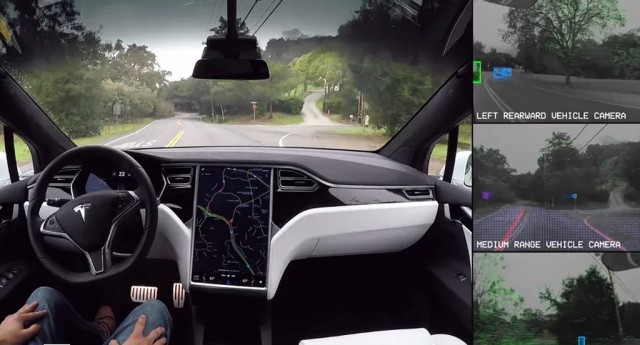Tesla Model 3, Model Y lose top safety ratings after dropping radar
Safety agencies deemed newer Tesla Model 3 and Model Y vehicles less safe due to a Tesla update intended to make the vehicles more safe. The NHTSA, IIHS, and Consumer Reports all downgraded safety ratings following Tesla’s announcement earlier this week of its transition away from radar-based safety systems to a camera-only system called Tesla Vision.
The downgrades could be temporary until Tesla issues over-the-air updates restoring the new system’s functionality.
Starting in May, the Tesla Model 3 electric compact sedan and 2021 Tesla Model Y electric compact crossover won’t be equipped with radar, effectively stripping the company’s lower-priced vehicles of life-saving features such as automatic emergency braking and active lane control as Tesla rolls out its new system. The Model S sedan and Model X three-row crossover, which typically crest the $100,000 price threshold, continued to have radar.
Tesla said in a blog post on Sunday that transitioning to only a camera-based system in its higher volume models will help them analyze “a large volume of real-world data in a short amount of time.”
The NHTSA updated its five-star rating to apply to vehicles built before April 27, 2021. Consumer Reports no longer lists the Model 3 as a Top Pick. The IIHS, which gave the Model 3 Tesla’s first Top Safety Pick+ award, is updating its listings to also indicate the date change.
The issue is how long these vehicles will lack systems their owners expect them to have.
“If a driver thinks their vehicle has a safety feature and it doesn’t, that fundamentally changes the safety profile of the vehicle,” David Friedman, VP of advocacy for Consumer Reports and a former acting administrator of the National Highway Traffic Safety Administration (NHTSA), said in CR‘s announcement of the downgrade. “It might not be there when they think it would save their lives.”
![Consumer Reports Tesla Model 3 Navigate on Autopilot ready for right-lane pass [CREDIT: CR] Consumer Reports Tesla Model 3 Navigate on Autopilot ready for right-lane pass [CREDIT: CR]](https://carsnspeed.net/wp-content/uploads/2021/05/tesla-model-3-model-y-lose-top-safety-ratings-after-dropping-radar.jpg)
Consumer Reports Tesla Model 3 Navigate on Autopilot ready for right-lane pass [CREDIT: CR]
![Tesla Model 3 dashboard in Autopilot testing with IIHS [CREDIT: IIHS] Tesla Model 3 dashboard in Autopilot testing with IIHS [CREDIT: IIHS]](https://carsnspeed.net/wp-content/uploads/2021/05/tesla-model-3-model-y-lose-top-safety-ratings-after-dropping-radar-1.jpg)
Tesla Model 3 dashboard in Autopilot testing with IIHS [CREDIT: IIHS]

Tesla Autopilot
In its blog post for Tesla Vision, Tesla said it will restore high-speed active lane control and other features via over-the-air updates “in the weeks ahead.” Tesla Vision’s reliance on camera hardware and machine learning software will enable those vehicles to earn greater levels of semi-autonomous driving mislabeled by Tesla as “Autopilot” and “Full-Self Driving.” With the latter system, hands-free driving could be extended from highways to city streets and enable point-to-point semi-autonomous driving, a longstanding goal of Tesla CEO Elon Musk.
In a separate but related development, a recent Tesla software update enabled a camera-based driver-monitoring system while Autopilot is engaged. The camera above the rearview mirror can detect and alert driver inattentiveness, similar to GM’s Super Cruise system and Ford’s forthcoming Blue Cruise system. Prior to the driver monitor, Tesla owners have been able to cheat the hands-free driving system by not sitting in the driver’s seat or taking naps while driving and other unsafe behavior chronicled on social media.
The high safety ratings that Tesla uses in its marketing of the Model 3 and Model Y could be restored once the safety agencies test the efficacy of the new camera-based system. The driver-attention monitor could make them even safer. Only time, and real-world safety testing, will tell.

